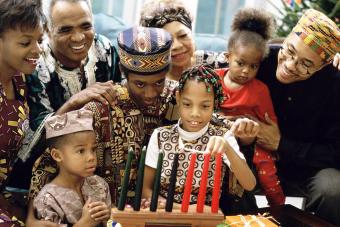
Personification poems for children can excite creativity while teaching kids about a powerful poetic device in the process. While finding a children's book dedicated exclusively to personification poems is extremely difficult, many resources are available for parents and educators to consider.
Personification and Metaphor
Just as its name suggests, personification gives human qualities to inanimate objects, ideas or actions, which makes the items seem like a person. The poetic device is similar to animal fables that give animals human attributes. When a writer attributes human characteristics to animals, she is using anthropomorphism.
Metaphor is a poetic device that makes a comparison between two different things. It does this by saying that one thing is actually another. For example, the night sky's "glistening tears" may be used to refer to stars. The metaphor states that stars are glistening tears. The description is not a personification because to glisten is not a human trait. Personification is a type of ontological metaphor that gives human characteristics to activities and abstract concepts. It may also be a type of entity metaphor that gives human traits to things. The night sky's "quivering stars" personifies the stars by stating that they quiver as a person may.
Although metaphor and personification can be complex, you can find countless examples of personification in many stories and movies for children. Any story that offers the perspective of an object uses personification. Movies like Cars and Beauty and the Beast are prime examples of stories that personify objects. In some cases, as in stories that help children with anxiety, the author may personify worry, stress or other emotions in order to make them relatable.
Personification Poems for Children
You may be familiar with traditional poems for kids that personify objects. Following are poetry books for kids that contain personification poems.
And the Dish Ran Away with the Spoon
And the Dish Ran Away with the Spoon offers a playful twist to the poem "Hey Diddle Diddle". The story takes children on an adventure with the characters of the poem that tells a story about what happens when the dish and the spoon show up late for the rhyme. The creative story is a great choice for teaching kids about the poetic device.
The Gingerbread Man
The Gingerbread Man is a timeless poem that personifies a gingerbread cookie. The children's poem has a catchy rhythm and a valuable lesson woven into its rhyme.
I'm a Little Teapot
I'm a Little Teapot is a sing-song rhyme for children that takes the perspective of the teapot. The familiar song is one that inspires children to imitate the object for added fun.
Humpty Dumpty and Other Favorites
Humpty Dumpty and Other Favorites is a great collection of Mother Goose poems for kids. The title character is one of a number of different personified characters in the timeless collection of children's poetry.
Other Poetry
You can probably think of others to add to the list. While examples of personification poetry for kids are helpful, some parents and teachers may be interested in books that use learning activities to teach kids about poetic devices. Poems by Shel Silverstein is a great place to look for more examples.
Personification Books for Parents and Educators
If you are interested in teaching kids about personification poetry specifically, resources may seem limited. However, books for teaching kids about poetry often include personification as a topic.
Graphic Organizers for Teaching Poetry Writing
Graphic Organizers for Teaching Poetry Writing: 20 Graphic Organizers with Model Poems and Lessons that Support Children as they Write Different Forms of Poetry by Betsy Franco has a generous title that reflects the nature of the activities in the book. This guide for educators and parents is suitable for children in first to third grade.
Graphic organizers are excellent teaching tools that are helpful for kids with visual learning styles. In addition to the graphic organizers, the book uses a systematic approach to lessons, which helps kids by breaking down concepts into small, digestible parts. The resource can be used to teach about different types of poetry and it features "model poems" for kids to use as guides along with the graphic organizers. Ultimately, children write their own poems.
Franco includes a model poem titled "Thoughts of a Backpack" that personifies the familiar childhood object. The fun perspective and light-hearted with of the piece makes it a great selection to teach kids about this topic.
Personification is a useful poetic device that can be found in everyday language. Teaching kids how to recognize and use this device can help them to develop a deeper appreciation for literature.







